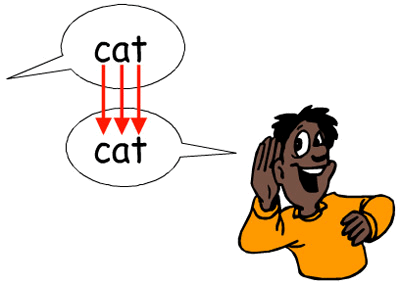7.3 Point-to-Point Correspondence Example #1
The vocal response “cat” made as a result of hearing someone say “cat,” for example, has point-to-point correspondence between the stimulus and the response. The “c” sound of the stimulus controls the “c” sound in the first part of the response, the “a” sound in the stimulus controls the second part of the response, and the “t” sound controls the final part of the response.
Point-to-Point Correspondence
A relationship between a discriminative stimulus and the response it controls with the following features:
The discriminative stimulus must have two or more components
The response must have two or more components
The first part of the stimulus must control the first part of the response, the second part of the stimulus must control the second part of the response, etc.
This section is for the civil and public discussion of the content of this page. It is not for personal notes. We reserve the right to moderate and remove comments that are irrelevant, disrespectful, hateful, harassing, threatening, or spamlike. If you are experiencing a technical issue, please contact our helpdesk for assistance.
